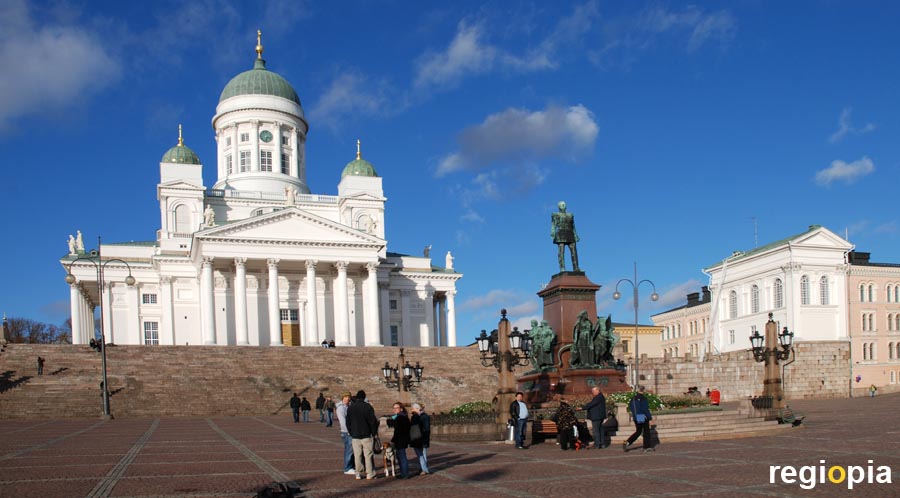
Helsinki Cathedral
The Tuomiokirkko Cathedral is the most famous sight in Helsinki. The gleaming white building stands on a hill above the city and can be seen from afar. The classical Helsinki cathedral was opened in 1852 after around 20 years of construction. The church was designed by Carl Ludwig Engel, a German architect who lived in Finland and built numerous important structures.
The building stands on a plan in the form of a Greek cross, the dome rises in the middle of the church. The interior of the Protestant church is very simple, only a few pictures and statues decorate the white interior.
The Helsinki Cathedral is located on Senate Square (Senaatintori) near the harbor. A monumental staircase leads from the square to the entrance of the church. On both sides of the wide staircase there are classicist guardhouses that frame the staircase. The other buildings on the square were also designed in classicist style. In the middle of the square is a monument to Alexander II. the Russian tsar was killed in an assassination attempt in St. Petersburg in 1881. The monument was erected in 1884 when Finland belonged to the Russian Empire. Finland did not gain independence from Russia until 1917.
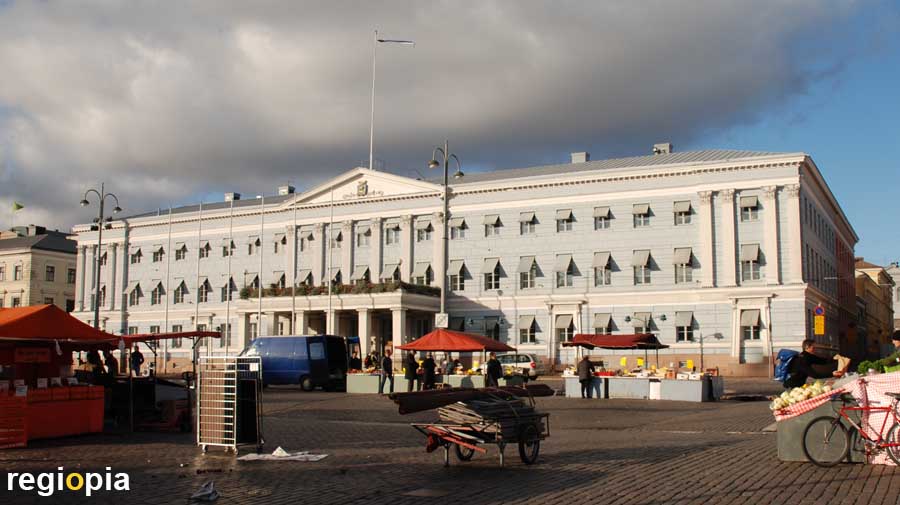
Helsinki City Hall
The Helsinki City Hall (Helsingin Kaupungintalo) was also designed by Carl Ludwig Engel. The more than 71 m long facade of the town hall dominates the market square at the harbor. The classical building was completed in 1833. The building that now houses the city parliament was originally built as a hotel. It was converted into the town hall in 1913. Inside the block there is a classical ballroom that is used for events.
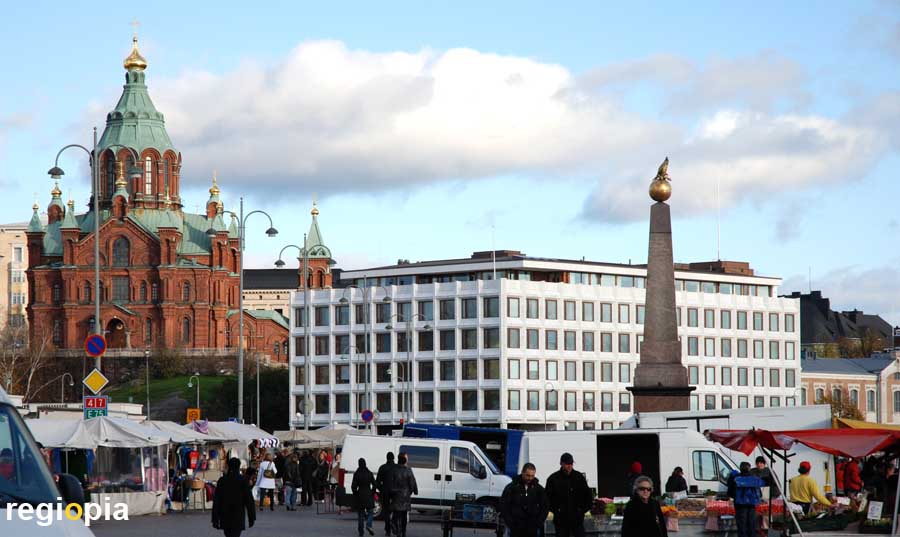
Uspensky Cathedral
The Russian Orthodox Church stands on a hill above the harbor and is one of the landmarks of Helsinki. The Uspensky Cathedral (Dormition Cathedral) was built in 1868. The architect Alexej Gornostajew designed the red brick building. Uspenski Cathedral is the largest Orthodox church in Finland. The building is a sign of Russian rule, as most of the Finns are Protestant Christians and only about 2% of Finland's residents belong to the Russian Orthodox Church. The splendid interior is also worth seeing.
The white office building in front of the church is the work of the famous architect Alvar Aalto.
www.visitfinland.com/de/artikel/22-architektur-highlights-in-finnland
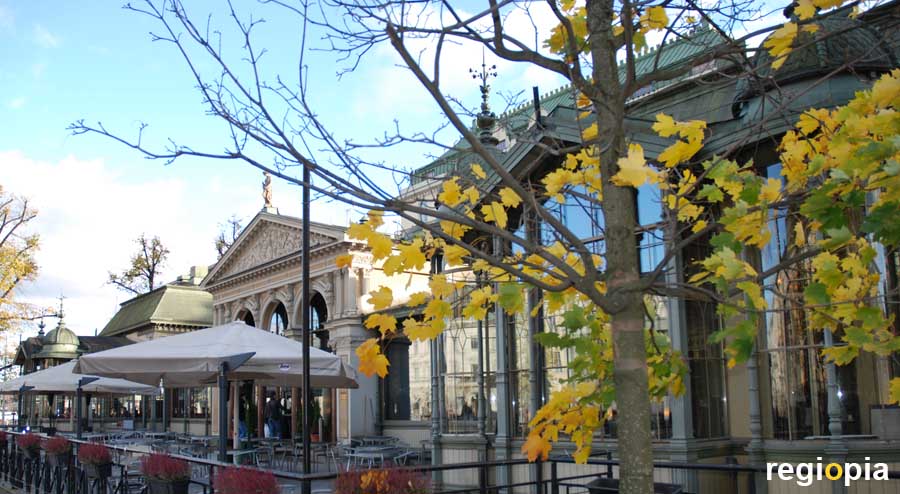
Esplanadi
Esplanadi, or "Espa" for short, is the splendid boulevard in Helsinki, which connects the harbor with the Swedish Theater (Svenska Teatern). The 85 m wide street has a park in the middle. On a rondola in the park there is a statue of the poet Johan Ludvig Runeberg, who wrote the poem "Vart land". The text from this poem forms the basis of the Finnish national anthem. The Esplanadi was laid out in 1912 and is a destination for picnic enthusiasts in summer. In the east the esplanade ends with the Havis Amanda fountain. Havis Amanda is a mermaid who chose to live on land. For the sculptor Ville Vallgren, she embodies the city of Helsinki as the daughter of the Baltic Sea.
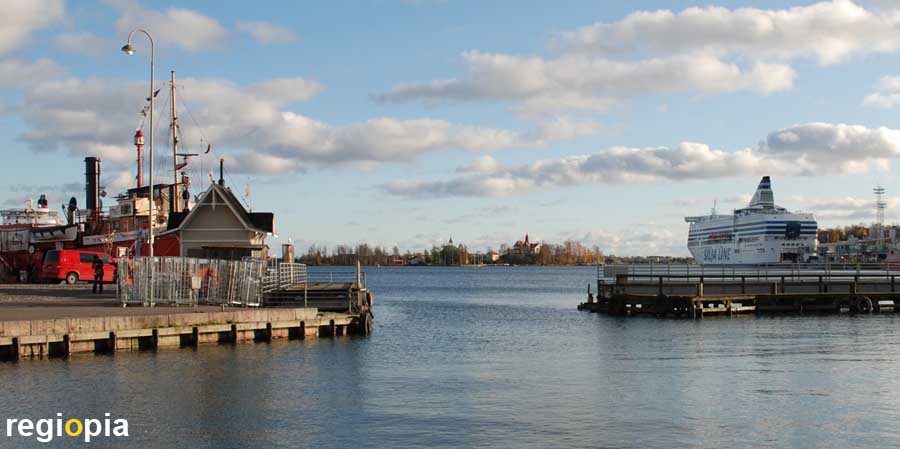
Helsinki Harbor
As a city on the Baltic Sea, the port is the center of Helsinki. Since the city is surrounded by water on three sides, there are several ports. The South Harbor is right in the center of Helsinki. The town hall is located here and there is a regular market on Kauppatori Square. Ferries run from the port to the offshore islands, where restaurants, museums and old fortresses are located. The island of Suomenlinna (Sveaborg) is a UNESCO World Heritage Site and one of the most famous attractions of Helsinki. The island is only around 2.5 kilometers away and can be reached by ferry.
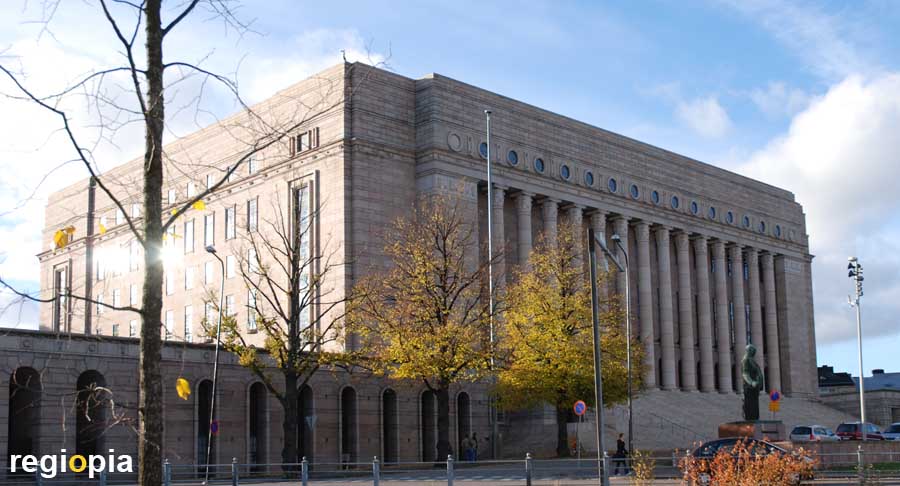
Parliament Building
The Finnish Parliament Building Eduskuntatalo opened in 1931 and is one of the largest structures in Helsinki. The neoclassical parliament was designed by architect Johan Sigfrid Siren. A monumental staircase leads to the entrance, which is located behind a high row of columns.
The right to vote was introduced in Finland in 1906 and the first session took place in 1907. At that time, the Grand Duchy was still part of Russia, but had a large degree of autonomy. Finland declared its independence with the October Revolution in 1917. Since then the country has been independent and is governed from here.
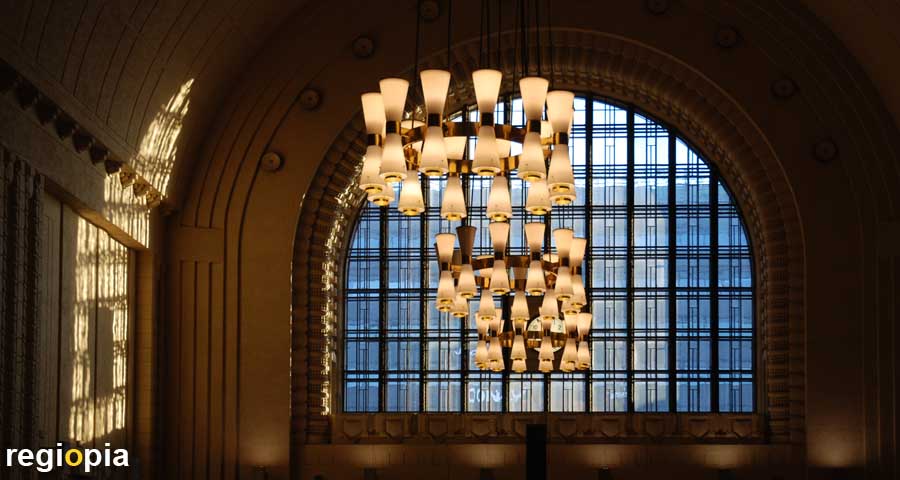
Helsinki Central Station
Helsinki Central Station is one of the most beautiful buildings in the city. The Art Nouveau train station by architect Eliel Saarinen was opened in 1919. In 1921 he emigrated to the USA, where he became professor of architecture and urban planning. His son Eero Saarinen became a famous architect who designed the Gateway Arch in St. Louis and the TWA Terminal at JFK Airport.
The train station in Helsiki became a landmark of the city, because of the huge stone figures at the entrance by Emil Wickström.
The main train station is also the largest transport hub in the Finnish capital, with long-distance trains, regional trains and two underground lines. There are two bus and tram stations in front of the train station.
Trains to Turku take around 2:20 hours, to Tampere just under 2 hours. The matka website is helpful when looking for transport links in Finland (see link). You can buy train tickets on the website of the State Railways of Finland VR.
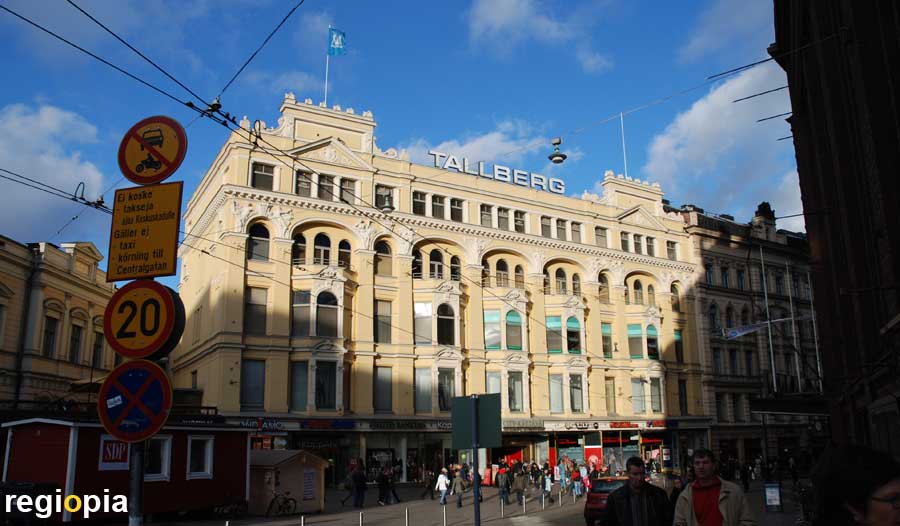
City Center
Helsinki city center is located between the Central Station and Esplanati. The Aleksanterinkato (photo) runs from east to west between Mannerheimintie and Senaatintori. Here you can find the big department stores and international shops. At the corner of Aleksanterinkato / Mannerheimintie is the Stockmann, Finland's most famous department store. In the streets west of Mannerheimintie there are significantly fewer shops but many good restaurants.
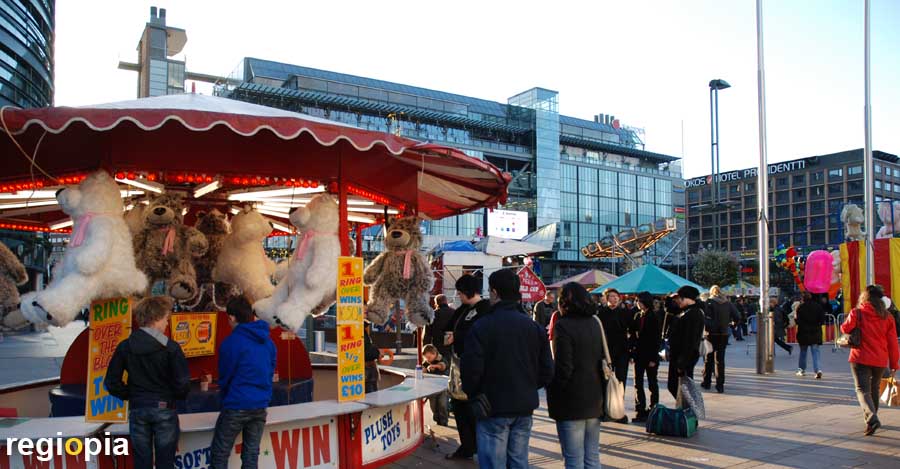
Narinkkatori
A large shopping center was built above the Kamppi metro station, making Narinkkatori square an inner-city square where festivals and other events are held. The square is between the main train station and the Tennispalatsi, which is home to the HAM Helsinki Art Museum.
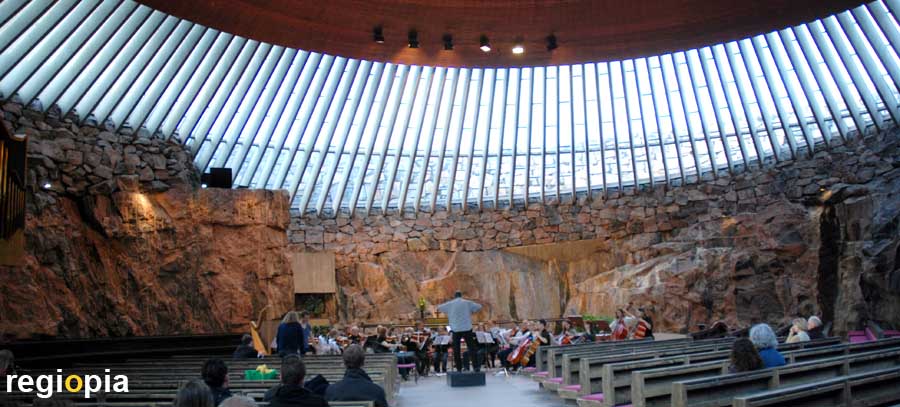
Helsinki Rock Church
The Temppeliaukio Evangelical Rock Church is one of Helsinki's top attractions, drawing over 500,000 visitors each year. The church was carved into a boulder and is spanned by a copper dome and glass louvers. In the lower area you can see the bare rock on which the rubble stones were placed. The rock church was designed by the two architects Timo and Tuomo Suomalainen and opened in 1969. The extraordinary Rock Church is often used for concerts.
City map Helsinki attractions
ads
Travel Guide Helsinki
ads
ads


